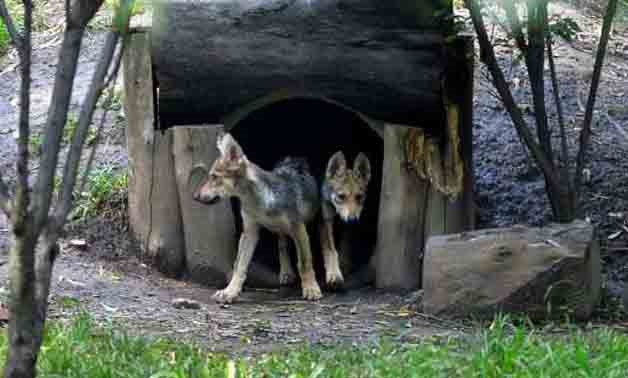
Two out of seven wolf cubs born in April 2017 are seen in the Zoologico los Coyotes in Mexico City.
Mexico City - 8 July 2017 : Mexican zoo officials are drooling over the birth of seven cubs of a species of endangered wolf.
They were born in April to a female named Pearl, who was nice and plump and ended up delighting vets with a surprisingly large litter.
"We were expecting four or five," Arturo Gayosso, director of the Zoologico los Coyotes in Mexico City, told AFP this week.
These are known as Mexican wolves (Canis lupus baileyi), a small, rare and genetically distinct subspecies of the gray wolf.
Their realm used to be the southwestern US and central and northern Mexico.
But the wolves' numbers started to dwindle at the start of the 20th century as populations of their native prey, such as deer and elk, declined and the canines turned to cattle for food and ranchers began to kill them off, according to the US Fish and Wildlife Service.
Since roughly the mid-1900s, Mexican wolves have been listed an endangered species in both countries.
The hope is that these seven babies -- five males and two females -- will be healthy enough to eventually be released into the wild to help create more wolves.
With coats that are a mix of yellow, gray and black, the cubs now weigh six to seven kilos (13 to 15.5 pounds) and have had contact with humans just once, when they were vaccinated.
Their father Yoltic was born in the same zoo. His name is a Nahautl Indian word that means "he who lives."
Next month wildlife experts from the United States and Mexico will meet to compare notes on populations of these wolves in each country and decide if the seven new cubs can be released.
Pearl was moved to Zoologico los Coyotes in December and hit it off right away with Yoltic, playing and running with him.
"That told us they would be good mates," said Gayosso.
The cubs were conceived in February, somewhere on the 800 square meter (8600 square foot) man-made prairie where the parents live.
Another factor encouraging a good coupling, Gayosso said, was unseasonably warm temperatures at the time.
"Maybe it was the weather," he said.
Comments
Leave a Comment